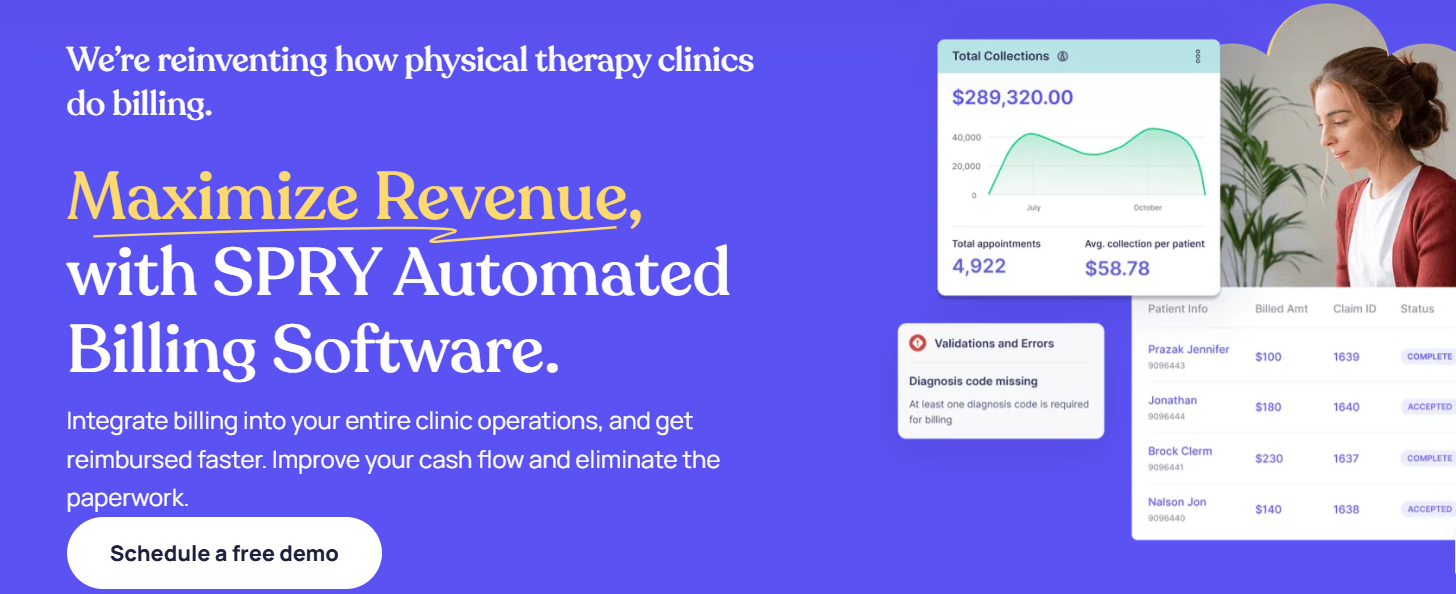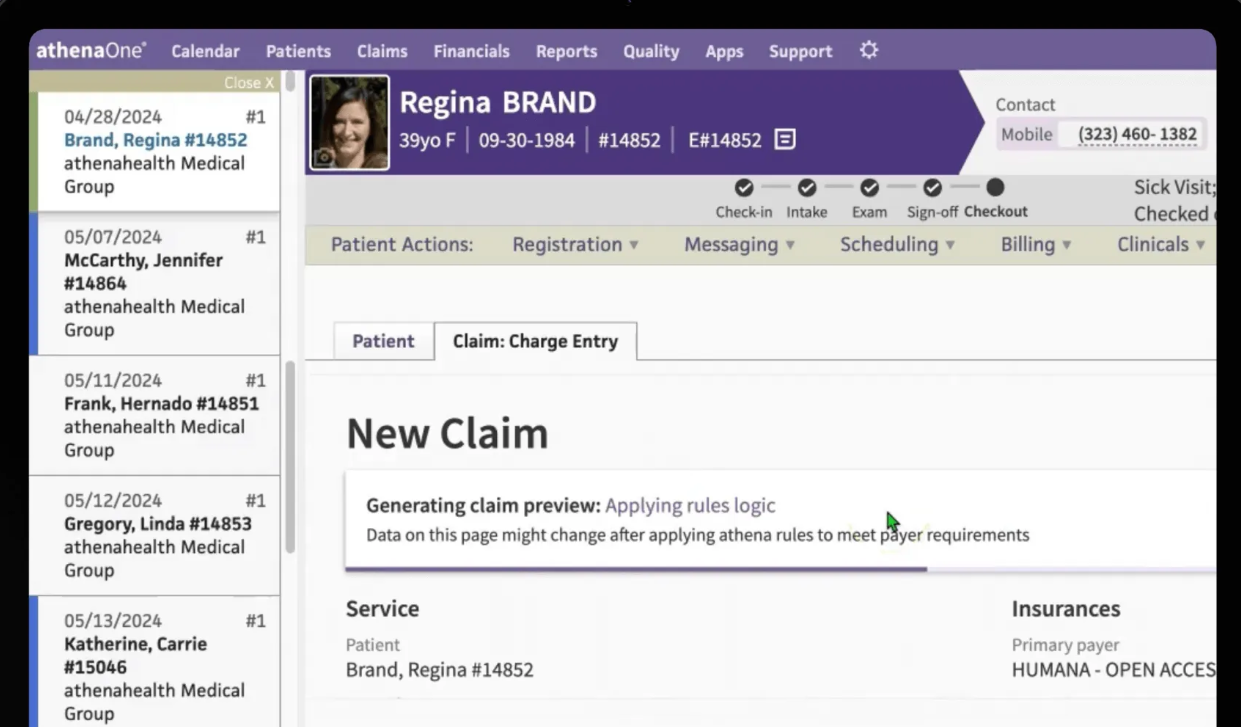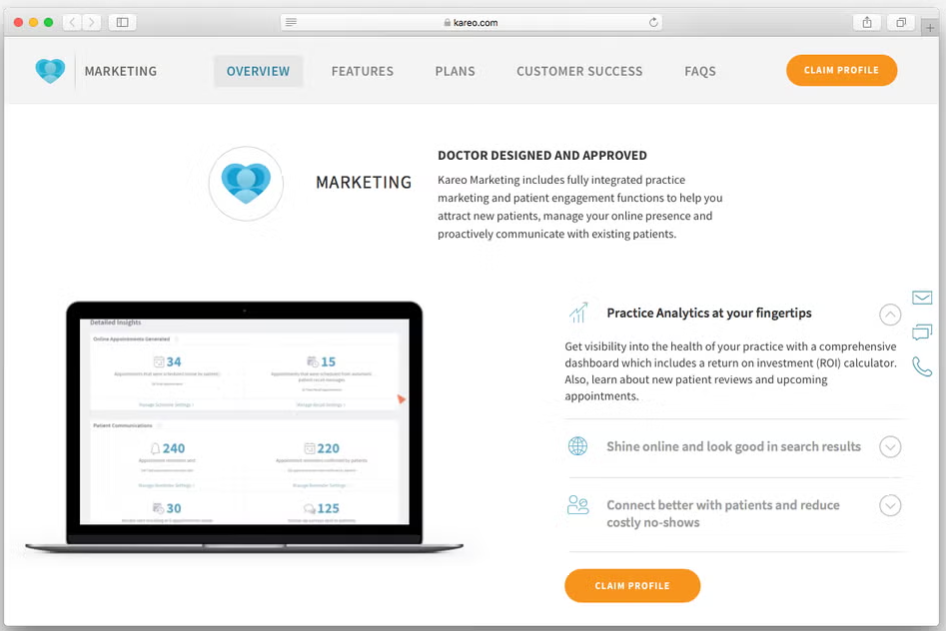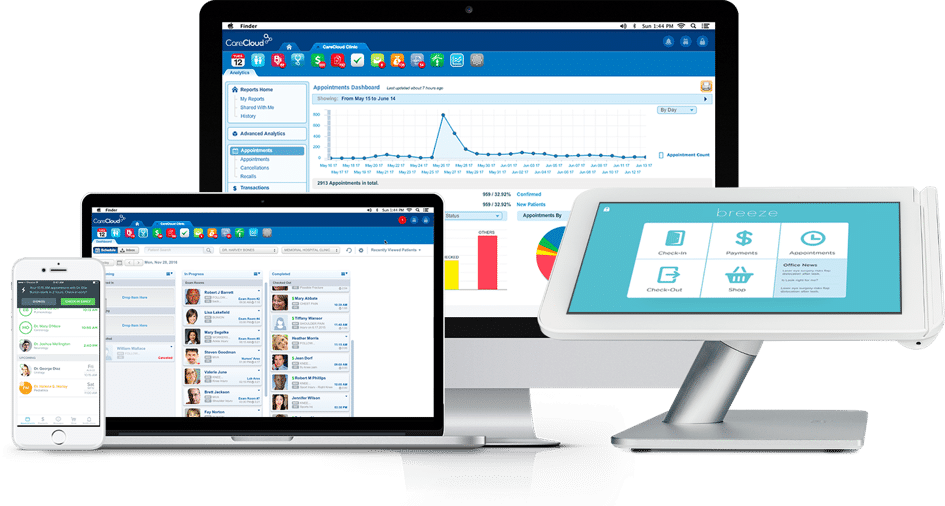Summary: Outsourcing orthopedic billing can significantly reduce administrative costs, improve cash flow, and minimize claim denials. Key strategies include:
- Partnering with specialized providers to leverage their expertise in orthopedic coding and billing.
- Ensuring proper vetting and implementation of outsourcing services to achieve optimal results.
- Understanding the core components of orthopedic billing outsourcing, such as revenue cycle management and denial management.
For orthopedic practices seeking the best outsourcing solution, SPRY stands out as the top choice, offering an all-in-one platform that enhances efficiency and maximizes revenue.
Executive Summary
Outsourcing orthopedic billing can reduce administrative costs by up to 70% while improving cash flow and reducing claim denials. This comprehensive guide covers the top outsourcing services, implementation strategies, and best practices for orthopedic practices looking to optimize their revenue cycle management. With the increasing complexity of orthopedic coding and billing regulations, many practices are turning to specialized outsourcing partners to maximize revenue and minimize administrative burden.
Key Takeaways:
- Orthopedic billing outsourcing can save practices 40-70% on administrative costs
- Specialized providers improve claim approval rates by 25-40%
- ROI timeline: 3-6 months for most orthopedic practices
- Top outsourcing services offer 95%+ clean claim rates
- Proper vetting and implementation are crucial for success
What is Orthopedic Billing Outsourcing?
Orthopedic billing outsourcing involves partnering with specialized third-party companies to handle your practice's revenue cycle management, from patient registration through final payment collection. Unlike general medical billing services, orthopedic billing outsourcing requires deep expertise in musculoskeletal procedures, complex surgical coding, and the unique documentation requirements of orthopedic care.
The outsourcing model has evolved significantly, with modern providers offering comprehensive services that integrate seamlessly with your practice management systems. These specialized companies understand the intricacies of orthopedic CPT codes, global period management, and the complex modifier requirements that make orthopedic billing particularly challenging.
Core Components of Orthopedic Billing Outsourcing
Revenue Cycle Management: Complete management of the billing process from patient intake through final payment, including insurance verification, prior authorization, and claims submission.
Specialized Coding Expertise: Professional coders with orthopedic-specific training who understand the nuances of fracture care, joint replacement billing, and complex surgical procedures.
Denial Management: Systematic approach to identifying, appealing, and preventing claim denials using orthopedic-specific denial patterns and resolution strategies.
Analytics and Reporting: Comprehensive reporting on practice performance, including key metrics like days in accounts receivable (AR), denial rates, and revenue trends.
Why Outsource Orthopedic Billing?
The Business Case for Outsourcing
Orthopedic practices face unique billing challenges that make outsourcing particularly beneficial. The complexity of orthopedic procedures, combined with evolving regulations and payer requirements, creates a compelling case for specialized expertise.
Key Benefits of Outsourcing
Advantages
- Cost Reduction: 40-70% savings on billing operations
- Expertise Access: Specialized orthopedic coding knowledge
- Improved Cash Flow: Faster claim processing and collection
- Reduced Denials: Expert claim preparation and submission
- Scalability: Easy adjustment to practice growth
- Compliance: Stay current with changing regulations
- Technology Access: Advanced billing software and analytics
Potential Drawbacks
- Less Control: Reduced direct oversight of billing processes
- Communication Gaps: Potential delays in issue resolution
- Data Security: Increased risk from third-party access
- Service Quality: Variable performance across providers
- Transition Costs: Initial setup and training expenses
- Contract Terms: Long-term commitments may limit flexibility
Top 5 Orthopedic Billing Outsourcing Services
1. SpryPT - Best Overall Orthopedic Billing Solution

Rating: 4.9/5
SpryPT stands out as the leading orthopedic billing outsourcing solution, combining advanced technology with specialty-specific expertise. Their comprehensive platform integrates seamlessly with existing practice workflows while providing dedicated orthopedic billing specialists.
Key Features:
- AI-powered documentation that reduces coding time by 40%
- Real-time insurance verification with instant eligibility checks
- Specialized orthopedic coding team with a 98% accuracy rate
- Integrated billing dashboard with real-time analytics
- Comprehensive denial management and appeals process
Best For: Multi-specialty orthopedic practices and surgery centers
2. Athenahealth - Best for Large Practices

Rating: 4.6/5
Athenahealth offers comprehensive revenue cycle management with strong orthopedic capabilities, particularly suited for larger practices and health systems.
Key Features:
- Cloud-based billing platform with real-time claim tracking
- Dedicated orthopedic billing specialists
- Advanced analytics and performance reporting
- Integrated patient engagement tools
Pricing: 3-7% of collections
Best For: Large orthopedic groups and health systems
3. AdvancedMD - Best for Customization
Rating: 4.4/5
AdvancedMD provides highly customizable billing solutions with strong orthopedic-specific workflows and reporting capabilities.
Key Features:
- Customizable billing workflows
- Specialized orthopedic templates
- Real-time eligibility verification
- Comprehensive reporting suite
Pricing: $449-749/month per provider plus percentage of collections
Best For: Practices requiring extensive customization
4. Kareo - Best Budget Option

Rating: 4.2/5
Kareo offers affordable billing outsourcing with basic orthopedic capabilities, suitable for smaller practices with budget constraints.
Key Features:
- Cost-effective pricing structure
- Basic orthopedic billing support
- Cloud-based platform
- Standard reporting tools
Pricing: 2.95-6.95% of collections
Best For: Small orthopedic practices and solo practitioners
5. CareCloud - Best Technology Integration

Rating: 4.3/5
CareCloud excels in technology integration with strong API connectivity and modern billing workflows.
Key Features:
- Advanced API integrations
- Modern user interface
- Real-time performance dashboards
- Mobile accessibility
Pricing: 2.75-9% of collections, depending on services
Best For: Tech-forward practices seeking integration
How to Choose the Right Outsourcing Partner
Essential Evaluation Criteria
Selecting the right orthopedic billing outsourcing partner requires careful evaluation of multiple factors. The decision will significantly impact your practice's financial performance and operational efficiency.
Orthopedic Expertise: Verify that the provider has specific experience with orthopedic billing, including knowledge of complex procedures, global periods, and modifier requirements. Ask for references from similar practices and review their coding accuracy rates.
Technology Platform: Evaluate the provider's technology infrastructure, including integration capabilities with your existing EMR system, real-time reporting dashboards, and mobile accessibility for on-the-go management.
Performance Metrics: Review key performance indicators, including clean claim rates (should be 95%+), average days in AR (target under 30 days), and denial rates (should be under 5% for established providers).
Implementation Strategy and Best Practices
Phase 1: Preparation and Planning (Weeks 1-4)
Successful outsourcing implementation begins with thorough preparation. This phase sets the foundation for a smooth transition and optimal results.
Data Audit and Cleanup: Review your current billing data for accuracy and completeness. Clean up patient demographics, insurance information, and outstanding claims before transition.
Process Documentation: Document your current billing workflows, including special procedures, payer-specific requirements, and practice preferences. This information will help the outsourcing partner understand your unique needs.
Staff Communication: Communicate the transition plan to all staff members, addressing concerns and explaining how the change will benefit the practice and their daily workflows.
Phase 2: System Integration (Weeks 5-8)
Technical Setup: Work with the outsourcing partner to establish system integrations, data feeds, and reporting mechanisms. Test all connections thoroughly before going live.
Staff Training: Provide training for staff members who will interact with the new billing system, including how to access reports, submit documentation, and communicate with the billing team.
Parallel Processing: Run parallel billing operations for 2-4 weeks to ensure accuracy and identify any issues before fully transitioning.
Phase 3: Go-Live and Optimization (Weeks 9-12)
Full Transition: Complete the transition to outsourced billing while maintaining close monitoring of key performance indicators.
Performance Review: Conduct weekly performance reviews during the first month, focusing on claim submission rates, denial patterns, and cash flow impacts.
Process Refinement: Work with the outsourcing partner to refine processes based on initial results and feedback from practice staff.
Measuring Success and ROI
Key Performance Indicators (KPIs)
Tracking the right metrics is essential for measuring the success of your orthopedic billing outsourcing partnership. Focus on both financial and operational indicators that directly impact your practice's performance.
ROI Calculation Framework
Calculate return on investment using both hard and soft savings to get a complete picture of outsourcing benefits.
Hard Savings:
- Reduced staffing costs (salaries, benefits, training)
- Eliminated software and technology expenses
- Reduced office space requirements
- Lower management overhead
Soft Savings:
- Improved cash flow from faster collections
- Reduced claim denials and rework
- Enhanced compliance and reduced audit risk
- Physician time freed for patient care
Common Pitfalls and How to Avoid Them
Implementation Challenges
Inadequate Due Diligence: Many practices rush into outsourcing partnerships without thoroughly vetting providers. Take time to check references, review performance data, and understand the provider's expertise in orthopedic billing.
Poor Communication Planning: Establish clear communication protocols from the start, including regular check-ins, performance reviews, and escalation procedures for issues.
Incomplete Data Migration: Ensure complete and accurate transfer of historical billing data, including outstanding claims, patient payment arrangements, and payer contracts.
Ongoing Management Issues
Lack of Oversight: Outsourcing doesn't mean abdicating responsibility. Maintain regular oversight through performance reviews, financial analysis, and quality audits.
Insufficient Staff Training: Ensure your staff understands how to work effectively with the outsourcing partner, including documentation requirements and communication protocols.
Ignoring Performance Trends: Monitor KPIs regularly and address declining performance immediately. Small issues can quickly become major problems if left unaddressed.
Alternative Solutions: Hybrid Models and Technology
Hybrid Outsourcing Models
Some practices benefit from hybrid models that combine in-house and outsourced billing functions. This approach allows practices to maintain control over certain aspects while leveraging external expertise for complex tasks.
Front-End In-House, Back-End Outsourced: Keep patient registration, insurance verification, and initial claim preparation in-house while outsourcing claims submission, follow-up, and denial management.
Specialty-Specific Outsourcing: Outsource only the most complex orthopedic procedures while maintaining simpler billing functions in-house.
Technology-Enhanced Solutions
Modern billing platforms like SpryPT's integrated billing system offer advanced automation that can reduce the need for full outsourcing while providing many of the same benefits.
AI-Powered Coding: Artificial intelligence tools can automatically suggest appropriate codes based on clinical documentation, reducing coding errors and speeding up the billing process.
Automated Eligibility Verification: Real-time insurance verification tools can eliminate manual verification processes and reduce claim denials.
Future Trends in Orthopedic Billing Outsourcing
Technology Evolution
The future of orthopedic billing outsourcing will be shaped by advancing technology, changing regulations, and evolving payer requirements.
Artificial Intelligence Integration: AI will increasingly automate coding, denial prediction, and prior authorization processes, making outsourcing even more efficient and cost-effective.
Real-Time Analytics: Advanced analytics will provide instant insights into billing performance, allowing for immediate adjustments and optimization.
Blockchain Technology: Emerging blockchain solutions may streamline claim processing and reduce fraud, making the entire billing process more transparent and efficient.
Regulatory Changes
Value-Based Care: The shift toward value-based payment models will require outsourcing partners to understand outcome tracking and quality reporting.
Price Transparency: New price transparency requirements will necessitate more sophisticated billing and reporting capabilities.
Conclusion
Outsourcing orthopedic billing represents a strategic opportunity for practices to reduce costs, improve efficiency, and focus on patient care. With potential savings of 40-70% and improved performance metrics, the business case for outsourcing is compelling for most orthopedic practices.
Success depends on careful selection of the right partner, thorough implementation planning, and ongoing performance management. Practices that invest time in proper due diligence and maintain active oversight typically see significant returns within 3-6 months.
The key to successful outsourcing lies in understanding your practice's specific needs, evaluating partners based on orthopedic expertise and proven results, and maintaining clear communication throughout the relationship. As the healthcare industry continues to evolve, outsourcing partnerships that combine specialized knowledge with advanced technology will become increasingly valuable.
For orthopedic practices ready to optimize their billing operations, consider exploring comprehensive solutions like SpryPT's integrated billing platform that combines the benefits of outsourcing with the control of in-house management, delivering measurable results and improved practice performance.
Ready to transform your orthopedic billing? Contact leading outsourcing providers for personalized assessments and discover how much your practice could save through strategic billing partnerships.
Frequently Asked Questions
How much can orthopedic practices save by outsourcing billing?
Orthopedic practices typically save 40-70% on billing operations by outsourcing. This includes direct cost savings on staff salaries, benefits, technology, and overhead, plus improved revenue from faster collections and reduced denials. Most practices see ROI within 3-6 months of implementation.
What should I look for in an orthopedic billing outsourcing partner?
Key factors include proven orthopedic expertise, certified coders with specialty training, clean claim rates above 95%, denial rates under 5%, strong technology integration capabilities, HIPAA compliance, and positive references from similar practices. Also evaluate their support structure and implementation process.
How long does it take to implement orthopedic billing outsourcing?
Implementation typically takes 8-12 weeks, including preparation, system integration, staff training, and parallel processing. The timeline may vary based on practice size, complexity of current systems, and data migration requirements. Proper planning and preparation are crucial for smooth implementation.
Will outsourcing billing affect my relationship with patients?
Quality outsourcing partners maintain professional patient communication and follow your practice's protocols. Many patients actually experience improved service through faster claim processing, better insurance verification, and more accurate billing. Clear communication about the change helps maintain patient confidence.
What happens to my billing data if I switch outsourcing partners?
Reputable outsourcing partners provide data portability and will transfer your information to new systems. Ensure your contract includes data ownership clauses and transition assistance. Maintain backup copies of critical data and establish clear data return procedures in your service agreement.
How do I maintain control over my billing while outsourcing?
Maintain control through regular performance reviews, detailed reporting dashboards, clear communication protocols, and defined escalation procedures. Establish KPI targets, conduct monthly business reviews, and ensure you have real-time access to billing metrics and patient account information.
What are the risks of outsourcing orthopedic billing?
Primary risks include potential communication gaps, reduced direct control, data security concerns, and variable service quality. Mitigate these risks by thoroughly vetting providers, establishing clear contracts with performance guarantees, implementing strong security protocols, and maintaining regular oversight.
Reduce costs and improve your reimbursement rate with a modern, all-in-one clinic management software.
Get a DemoLegal Disclosure:- Comparative information presented reflects our records as of Nov 2025. Product features, pricing, and availability for both our products and competitors' offerings may change over time. Statements about competitors are based on publicly available information, market research, and customer feedback; supporting documentation and sources are available upon request. Performance metrics and customer outcomes represent reported experiences that may vary based on facility configuration, existing workflows, staff adoption, and payer mix. We recommend conducting your own due diligence and verifying current features, pricing, and capabilities directly with each vendor when making software evaluation decisions. This content is for informational purposes only and does not constitute legal, financial, or business advice.












